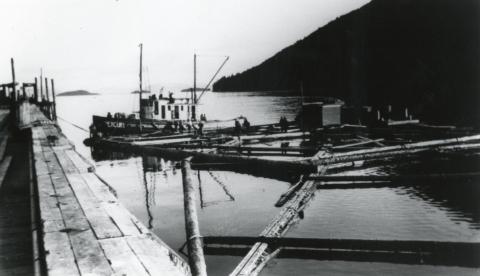Fish Trap
Fish Trap
“Both of Excursion Inlet’s canneries, it seems, depended almost completely on traps for their supply of salmon. The traps, PAF (Pacific Alaska Fisheries) wrote, allowed a canner to maintain absolute control of the size of his catch at all times. Government officials looked favorably on fish traps, mostly because they were stationary and easy to monitor, as opposed to vessels that could enter the mouth of a stream and leave with a load of fish with no one the wiser. Fishermen resented the traps, which they felt caught too many fish and deprived them of a market for their catch. Robbing them, often with the complicity of paid-off watchmen, was considered good sport and an honorable occupation. Icy Strait was considered a fertile ground for “fish pirates.”’ From Canning Salmon at Excursion Inlet, Alaska: The First Century, February 12, 2013, by Jim Mackovjak, Gustavus, Alaska
“Laws regarding fish traps tended to fluctuate. Traps were originally fairly unregulated, and canneries would often place them directly in stream mouths, intercepting the entire spawning population until the “run” of salmon was destroyed. Later regulations placed limits on where traps could be located, when they could operate, how long the jiggers could be, etc. By the 1940s, the salmon population had declined so much that trap catches were fairly low, but the price of salmon had risen enough to keep traps cost-effective. When Alaska became a state in 1959, traps were outlawed entirely, leading to the closure of many canneries (other methods of fishing were not efficient enough for the size and type of these operations).” From Funter Bay History – More Fish Traps & Fish Pirates by Gabe Emerson
Hoonah resident, William Raymond "Bill" Cook, (1932 – 2012, his Tlingit name was Geiyax eesh, Bill was Tlingit of the Eagle Moiety, Chookaneidi clan, Glacier Bay Ice Berg House, and T'akdeintaan Yadi.) worked on a fish trap; perhaps the one seen in this photograph.



